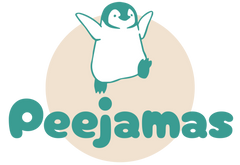Since people have been having babies, parents have been trying to figure out a way to deal with the waste that the babies produce. As people have grown and developed their understanding of the human experience, the pendulum has swung back and forth several times on the “right” way to potty train.

(Pixabay / huncoder)
In today’s article, we’re going to look back at some of those historical ideas, practices and movements. In the process, you can see what did and didn’t work. Hopefully, that will help you make an educated decision as you face important choices regarding potty training your own child.
The Earliest Potty Training
One of the oldest styles of potty training is called “elimination communication,” and several cultures (including China, Africa, and India) have used it for centuries. It’s starting to grab a foothold in the Western world as celebrities and mommy-bloggers gravitate toward it and tout how miraculous it is that their seven-month-old baby is using the toilet (with assistance, of course).
At its most basic, elimination communication is when mothers closely observe their infants for signs that they are about to let the dam break, and then quickly move them to a designated spot for relief. In some cultures, the mothers utter a soft whistling or shushing sound during the “training” process, so when they make that sound as the child ages, the child will essentially go on cue (does the name Pavlov ring a bell?).
Often, people who use the elimination communication method start “training” their child as early as a few days old, and many times don’t use diapers at all, even as the child gets older.
Forced Potty Training
In the time before disposable diapers, parents had a huge incentive to potty train early and quickly because every day they waited meant several more diapers to deal with. We use the term “deal with” loosely here as options were more limited back then. Dirty diapers were usually the only ones that got washed and boiled, and wet diapers often just got hung up to dry without getting cleaned and sanitized. Additionally, back in the Victorian era, a child might wear the same diaper for multiple days at a time! This lack of hygiene was the reason behind the prevalence of diaper rash and other infections among infants and toddlers.
To get their children potty trained early and quickly, doctors often advised parents to “train” their children using suppositories or enemas to make them go when it was convenient. Many people believe that that practice, combined with the lack of moisture-wicking disposable diapers, is why the average age of potty training was 18 months old (compared to the average age of three years old today).
Child-Led Potty Training
Nowadays (except for those who swear by elimination communication) most people train their children by letting the kids walk themselves to the toilet. Using incentives, positive communication, and a lot of patience, parents are enabling their children to train at their own pace. Some people report that children who use cloth diapers start toddling to the loo a little earlier than those who use mostly disposable diapers, but really, each child is different.
Let’s Talk Politics
Believe it or not, potty training has a long and dangerously political history. One famous doctor, Sigmund Freud, proposed a theory that children’s personalities were dictated by the way their parents potty trained them. He believed that parents who forced potty training too early or were harsh or demeaning during the process could negatively impact their children for the rest of their lives.
Though this theory isn’t very popular these days, back 60 or so years ago, some groups attempted to “create” submissive, rigid, rule-followers by forcing communal toilet training. Additionally, some war propaganda blamed unsavory enemy character traits (excessive anger, violent tendencies, compulsive behavior, anti-democratic ideals, or uptight natures) on how their parents potty trained.
In more recent times, while some people use elimination communication because it is probably the most economical and environmentally-friendly method out there, others use it as a platform to shame other parents for being too lazy (or distracted) to pay attention to their children. It feels like you just can’t win!
What It Boils Down To
In the end, you need to figure out what works best for your child. If you have multiple children, you will probably find that what worked for the first may not work for the second or third or 10th. Child-led potty training is the most popular form of toilet training, but even within that method, there are about a thousand variations. Some people use candy as a reward, while others use stickers, fun activities, or small toys as incentives.
Night training offers its own spectrum of choices. Some people use bed wetting alarms, and others use alternatives to bed wetting monitors such as Peejamas absorbable jammies that soak up excess moisture but still leave enough of a wet feeling to signal kids to wake up and get to the bathroom.
You may end up needing to use a little bit of this and a little bit of that, but even the most stubborn kid can get potty trained with enough patience and reassurance.


